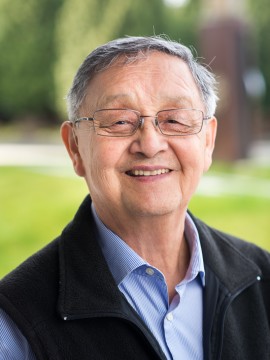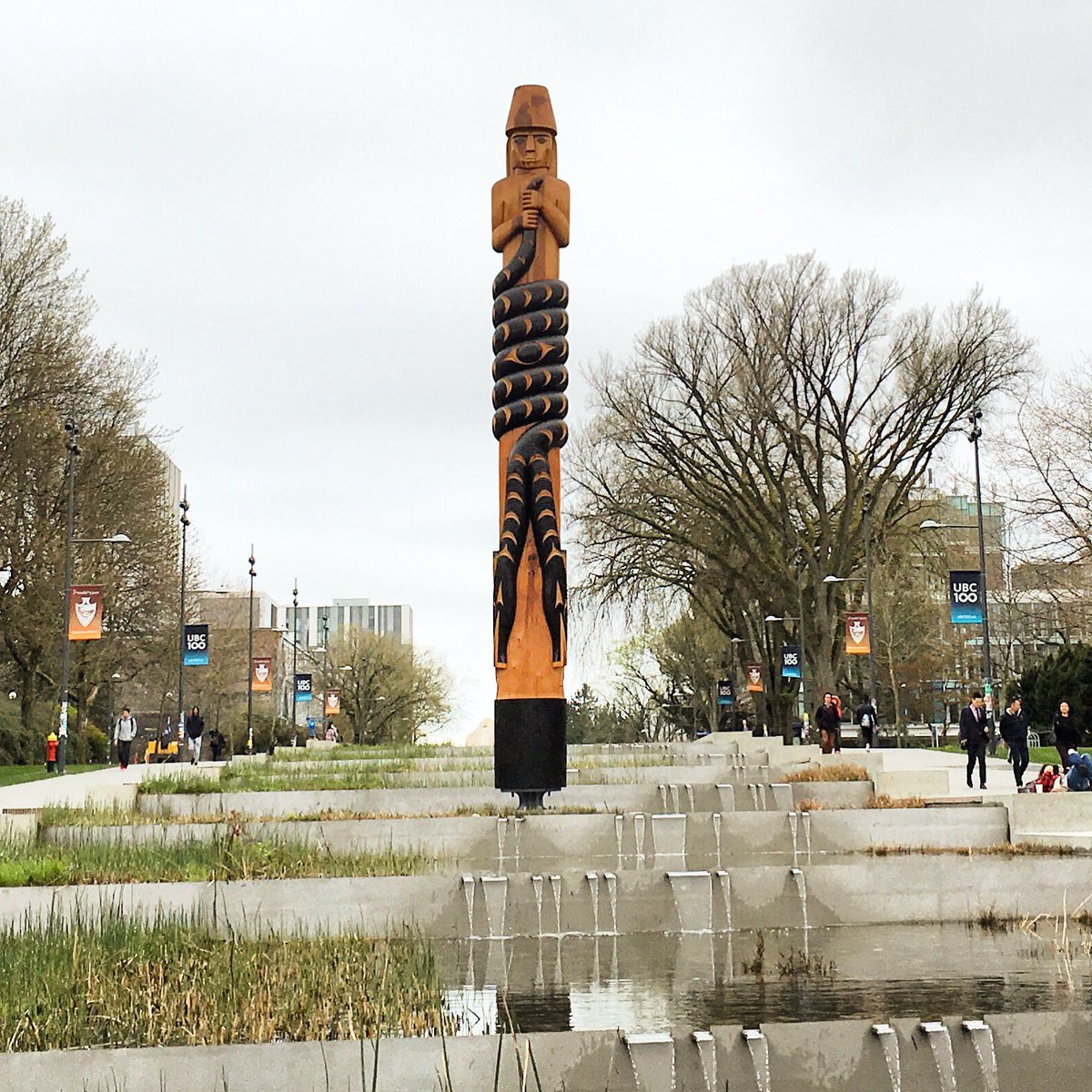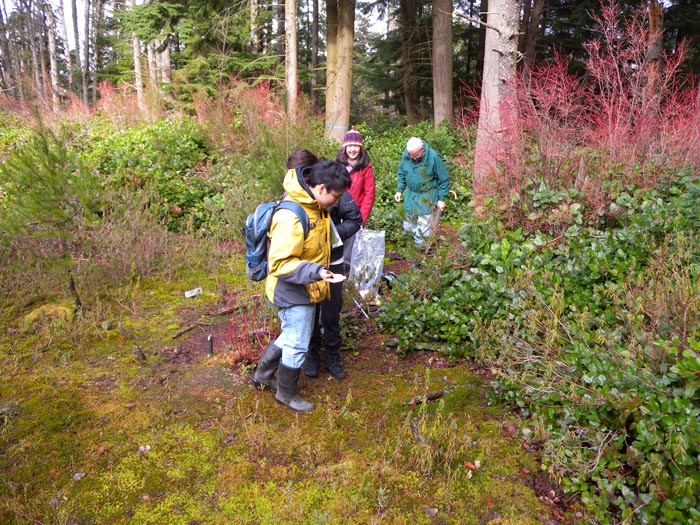Camosun Bog Restoration assignment -st
5000 years ago, the Camosun Bog formed when a heavy block of ice created a depression in the land. Initially, it was a lake but over time it turned into a swamp and finally to a bog. In 1929, the City of Vancouver added drains because housing was intruding the area which made the bog really dry. Hemlock trees started growing in the area and were taken down in 1991. To help improve the bog conditions, sphagnum moss was planted. Volunteers from schools came to help restore the bog and without them, the bog would not be what it is today.
The Camosun Bog is quite important for the Musqueam people To Western people, they thought the bogs were unusable and had no meaning; however, to Musqueam people, the bog was important to them because it was part of their history. Grant states that draining a bog is essentially erasing the "evidence of the story Musqueam." and when a bog is completely drained it is removing all evidence of Indigenous people. They are unable to tell where their stories originated from. Grant hopes that one day, the Bog can grow and become bigger and use the bog as a learning tool to teach people about the value of a bog. To Musqueam people, the bog is crucial to their stories and destroying something so beautiful is calamitous to them.

 Larry Grant is of Chinese and Musqueam descent. His father originated from Guangdong Province in China and came to Canada in the 1920s. Larry's father worked on a farm and would always see a young lady walking by and eventually that lady became his wife. Back then, the Indian Act was still in effect. The Act forbid non-Indians to interact with Indians on the reserve. Regardless of the Act, Larry's father and mother still got together and had four children. Larry is the second son and is referred to as number two. In his parents' cultures, the eldest son inherits everything and this caused Larry to think about his own future and what he wanted to do because he was never going to inherit anything unless his brother decided to share. As a child, Larry struggled to find who he was because he wasn't able to go to an Indian school. He was deemed as Chinese although he didn't really resonate with that community. He was boarded out to a Chinese couple and he didn't feel like he belonged to a family. His grandfather was a logging contractor during his mid-life and helped to log out Point Grey. Larry's grandfather was wealthy but he gave everything away and only kept the things he needed. Larry was very confused and it took Larry a while to realize what his mother meant. What Larry believes is that being wealthy and having a lot of stuff doesn't matter. What matters is giving back to the community and sharing stories with others.
Larry Grant is of Chinese and Musqueam descent. His father originated from Guangdong Province in China and came to Canada in the 1920s. Larry's father worked on a farm and would always see a young lady walking by and eventually that lady became his wife. Back then, the Indian Act was still in effect. The Act forbid non-Indians to interact with Indians on the reserve. Regardless of the Act, Larry's father and mother still got together and had four children. Larry is the second son and is referred to as number two. In his parents' cultures, the eldest son inherits everything and this caused Larry to think about his own future and what he wanted to do because he was never going to inherit anything unless his brother decided to share. As a child, Larry struggled to find who he was because he wasn't able to go to an Indian school. He was deemed as Chinese although he didn't really resonate with that community. He was boarded out to a Chinese couple and he didn't feel like he belonged to a family. His grandfather was a logging contractor during his mid-life and helped to log out Point Grey. Larry's grandfather was wealthy but he gave everything away and only kept the things he needed. Larry was very confused and it took Larry a while to realize what his mother meant. What Larry believes is that being wealthy and having a lot of stuff doesn't matter. What matters is giving back to the community and sharing stories with others.

The Camosun Bog is quite important for the Musqueam people To Western people, they thought the bogs were unusable and had no meaning; however, to Musqueam people, the bog was important to them because it was part of their history. Grant states that draining a bog is essentially erasing the "evidence of the story Musqueam." and when a bog is completely drained it is removing all evidence of Indigenous people. They are unable to tell where their stories originated from. Grant hopes that one day, the Bog can grow and become bigger and use the bog as a learning tool to teach people about the value of a bog. To Musqueam people, the bog is crucial to their stories and destroying something so beautiful is calamitous to them.

 Larry Grant is of Chinese and Musqueam descent. His father originated from Guangdong Province in China and came to Canada in the 1920s. Larry's father worked on a farm and would always see a young lady walking by and eventually that lady became his wife. Back then, the Indian Act was still in effect. The Act forbid non-Indians to interact with Indians on the reserve. Regardless of the Act, Larry's father and mother still got together and had four children. Larry is the second son and is referred to as number two. In his parents' cultures, the eldest son inherits everything and this caused Larry to think about his own future and what he wanted to do because he was never going to inherit anything unless his brother decided to share. As a child, Larry struggled to find who he was because he wasn't able to go to an Indian school. He was deemed as Chinese although he didn't really resonate with that community. He was boarded out to a Chinese couple and he didn't feel like he belonged to a family. His grandfather was a logging contractor during his mid-life and helped to log out Point Grey. Larry's grandfather was wealthy but he gave everything away and only kept the things he needed. Larry was very confused and it took Larry a while to realize what his mother meant. What Larry believes is that being wealthy and having a lot of stuff doesn't matter. What matters is giving back to the community and sharing stories with others.
Larry Grant is of Chinese and Musqueam descent. His father originated from Guangdong Province in China and came to Canada in the 1920s. Larry's father worked on a farm and would always see a young lady walking by and eventually that lady became his wife. Back then, the Indian Act was still in effect. The Act forbid non-Indians to interact with Indians on the reserve. Regardless of the Act, Larry's father and mother still got together and had four children. Larry is the second son and is referred to as number two. In his parents' cultures, the eldest son inherits everything and this caused Larry to think about his own future and what he wanted to do because he was never going to inherit anything unless his brother decided to share. As a child, Larry struggled to find who he was because he wasn't able to go to an Indian school. He was deemed as Chinese although he didn't really resonate with that community. He was boarded out to a Chinese couple and he didn't feel like he belonged to a family. His grandfather was a logging contractor during his mid-life and helped to log out Point Grey. Larry's grandfather was wealthy but he gave everything away and only kept the things he needed. Larry was very confused and it took Larry a while to realize what his mother meant. What Larry believes is that being wealthy and having a lot of stuff doesn't matter. What matters is giving back to the community and sharing stories with others.
The totem pole is a double-headed serpent which explains the origins of the Musqueam name. The story begins with a Serpent living in a small lake which is what we now know as Camosun Bog. The young were warned never to go too close to the lake or they would die. The massive serpent created a path that became the river that passes through Musqueam. It created a plant called the məθkʷəy̓ which is why the place is called Musqueam place of the məθkʷəy̓. This was how they got their name.


Comments
Post a Comment